Hi! I’m Stephanie Chasteen, a physicist, education researcher, and full-time consultant. I mostly work as external evaluator for STEM education reform projects focusing on institutional change.
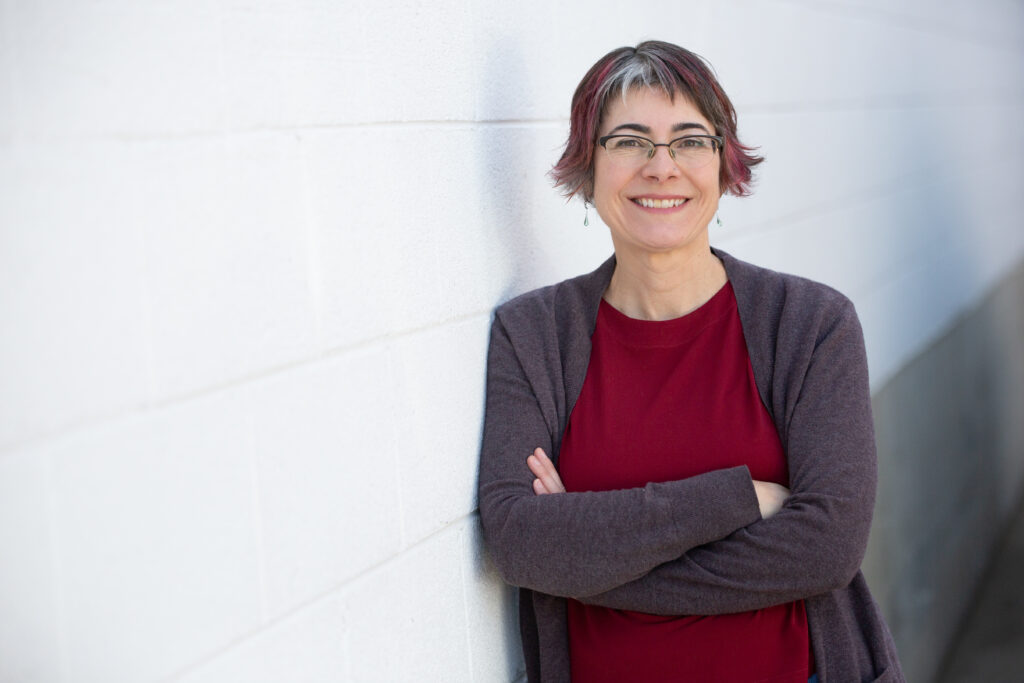
Photo credit ELC Photography: elcphoto.com
More information:
- Publications and Talks
- My CV (updated 7/2022)
My focus is on discipline-based education research (DBER), faculty adoption of evidence-based teaching practices in STEM, and department-level initiatives in higher education. I am the former Associate Director of the Science Education Initiative at the University of Colorado Boulder. A former science journalist, I make heavy use of communication and multimedia tools in my work, and have written articles, web modules, podcasts, and directed short films aimed at disseminating evidence-based teaching practice. See multimedia productions and educational writing.
I have worked in a wide range of organizations, consulting for the American Physical Society and American Association of Physics Teachers, and holding positions at the University of Colorado, the Exploratorium in San Francisco, National Public Radio’s science desk, and my cozy home office.
If you are looking for other physics education consultants, check out the Physics Education Consultants Directory at PhysPort.
Articles about me
Because my career path has been somewhat unusual, there have been several articles about my transition from science, to science writing, to science education. Here are a few:
- Seeking the Warm Spot: A nonlinear career in writing and education. Article about my career transitions on the international Agora blog from L’Oreal Foundation. (2012) This is cross-posted on my blog.
- STEMinist Profile.Short outline of my career on blog about women in science. (2012)
- American Physical Society interview, for Forum on Graduate Affairs, detailing my career and my advice to other people seeking alternative careers in science. (2007)
My career
I have an undergraduate degree in social psychology, a PhD in physics, extensive experience in science journalism, podcasting, and multimedia production, and I took a stint in the Peace Corps. I’m a polymath, and curious, and this is my strength.
I entered Bard College as a physics major, but felt discouraged by my perception that the classes were easier for others than for me. I later found out that I was one of the best students in the class. (This is a classic case of imposter syndrome). I switched to social psychology, which I loved, and gave me a solid grounding in the social sciences. I kept studying science and math and realized that I wanted to learn more physics.
After spending two years in the Peace Corps in Guinea, West Africa (and founding the nonprofit Friends of Guinea upon my return), I was accepted for graduate studies in physics at University of California Santa Cruz. My doctorate was in condensed matter physics, and focused on making cheaper solar energy using semiconducting plastics.
While in graduate school, I fiddled around a lot in science education, through science fairs, tutoring and teaching, coursework, rehashing of undergrad lab manuals, and other such delights. I also worked as a freelance science journalist, amassing a little list of publications in the popular press on a variety of topics such as evolutionary biology, light propagation, and AIDS. I spent the summer of 2003 as a AAAS Mass Media Fellow at National P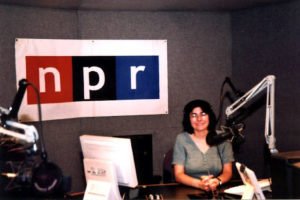 ublic Radio in Washington DC. This was a transformative experience, as I learned how to write short, and accurately, and got to shadow amazing reporters on the job. I also became an audio addict, and later used these skills to create audio podcasts and other multimedia.
ublic Radio in Washington DC. This was a transformative experience, as I learned how to write short, and accurately, and got to shadow amazing reporters on the job. I also became an audio addict, and later used these skills to create audio podcasts and other multimedia.
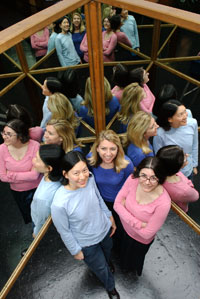 After graduate school, I took a postdoctoral position at the Exploratorium Museum of Science in San Francisco, as part of a new NSF program to teach scientists to do public education. To the left is a photo of me with the other postdocs at the museum. While at the Exploratorium, I worked with my mentor and friend Paul Doherty, created and taught hands-on science workshops for teachers, and wrote and produced several podcasts. The Exploratorium was a deeply inspiring place to be, and I decided that I wanted to leave science journalism, and dedicate my life to reforming science education to be more inspiring.
After graduate school, I took a postdoctoral position at the Exploratorium Museum of Science in San Francisco, as part of a new NSF program to teach scientists to do public education. To the left is a photo of me with the other postdocs at the museum. While at the Exploratorium, I worked with my mentor and friend Paul Doherty, created and taught hands-on science workshops for teachers, and wrote and produced several podcasts. The Exploratorium was a deeply inspiring place to be, and I decided that I wanted to leave science journalism, and dedicate my life to reforming science education to be more inspiring.
I then moved to Boulder, Colorado, to learn more about science education and research-based teaching methods (to become an “informed activist” in the word of a colleague). I joined the Science Education Initiative (SEI) at the University of Colorado Boulder as a postdoc in physics, and my research is best-known on the impact of the SEI model, and student learning in upper division physics. See peer-reviewed publications. I have also created a wide variety of multimedia products for the PhET Interactive Simulations as their multimedia director.
I was the PI of the TRESTLE (Transforming Education, Stimulating Teaching and Learning Excellence) project at CU Boulder, helping to leverage the existing expertise built through the SEI to support further change at the institution. From that work I co-authored the Science Education Initiative Handbook about how to support department-based education initiatives.
I am now a full-time consultant, mostly providing external evaluation for national STEM reform projects in physics and beyond. I have strategically avoided a faculty track, and consider myself a change agent and academic “at large,” providing expertise and woman-power to support broad change in STEM education. See my full list of clients. I am also a mom, hiker, climber, and dancer.
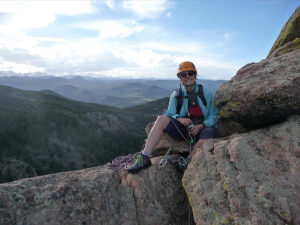
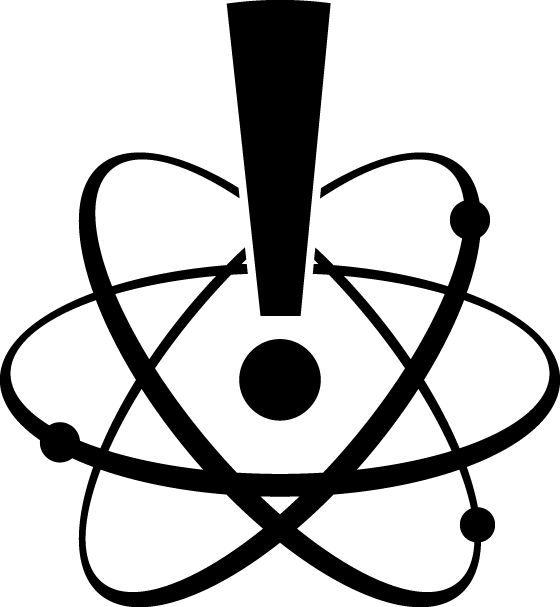
![By Boris Solovyev (Own work) [CC BY-SA 4.0 (http://creativecommons.org/licenses/by-sa/4.0)], via Wikimedia Commons](https://www.chasteenconsulting.com/wp-content/uploads/2016/07/Lena_Delta_B.Lyakhovsky_Island_2010-09-28_Boris-copy-3-1-1500x600.jpeg)